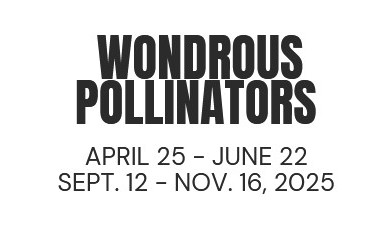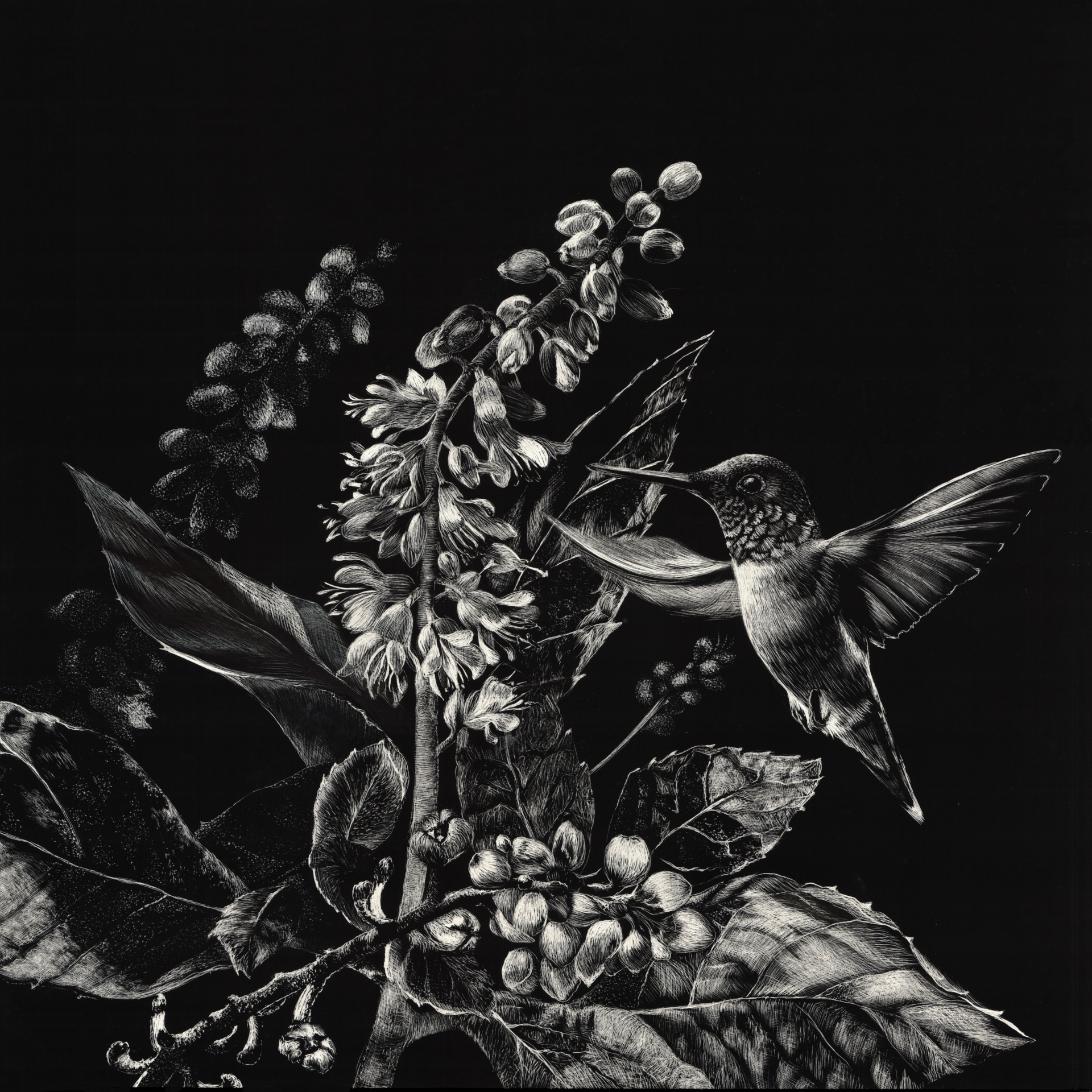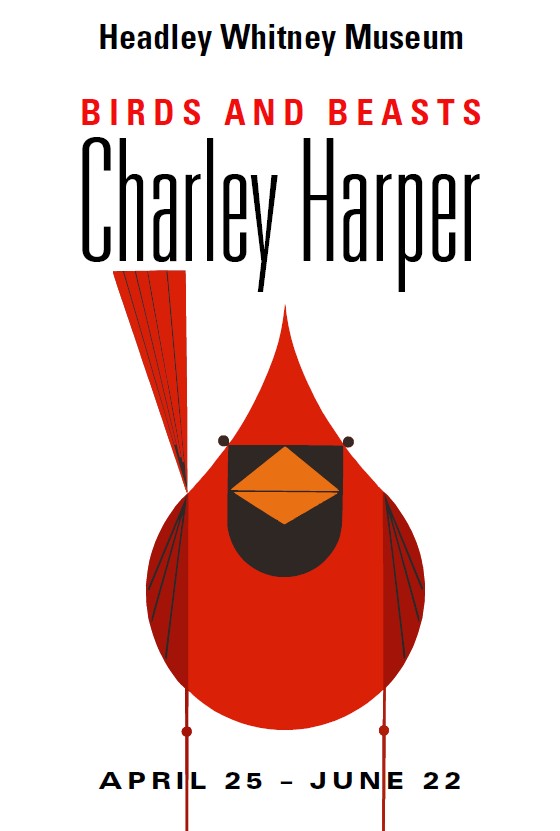
Lindsey Kiser: Wondrous Pollinators
Headley Whitney Museum
4435 Old Frankfort Pike
Lexington, Kentucky 40510
April 25 to June 22, 2025
September 12 to November 16, 2025
Gallery Talk, October 5, 2025 – 2 pm
Hours: Friday, Saturday, Sunday 10 am – 4 pm
Admission: $10 Adults
Free for children 17 and under & students with ID
Pollinators are an endless source of wonder. The term “pollinator” includes bees and butterflies. Yet, hummingbirds, bats, moths, and some mammals, as well as insects such as dragonflies, flies, wasps, and beetles are considered accidental pollinators.
These remarkable organisms possess intricate and purposeful physical structures. Many pollinators engage in miraculous biannual migrations and play vital roles in ecosystems. Of course, they are well known for aiding in the transfer of pollen between the male part of a plant and the female part of the plant or even between plants, ultimately yielding fruits, vegetables, and other crops. In addition, pollinators aid in the continuation of the species of many native plants, and their bodies nourish countless predators, including many songbirds.
The biological function of cross-pollination provided by pollinators metaphorically represents the dynamic interplay of diverse concepts. I am passionate about themes that encourage community-wide conversations about ideation and innovation; the environment and agri-business; education; and the arts. Pollination can serve as a backdrop for exploring how artists, inventors, policy-makers, and individuals from various disciplines draw inspiration from disparate sources, creating something entirely new through the cross-fertilization of thoughts.


2024 Lindsey Kiser, Aerial Ballet, scratchbaord, 8″ x 8″
What is Scratchboard?
Scratchboard is a form of direct engraving with scalpels and sharpened sewing needles to remove a top layer of black ink to reveal an underlayer of white clay. If color is desired, layer after layer of colorful inks are added to the revealed white clay and then scratched again. Traditional etching and printmaking are the origin of scratchboard art. Because the medium requires working in reverse by applying highlights onto the dark surface rather than shadows onto a white surface, it is considered by many artists to be one of the most difficult media to master.



Passion for Pollinators: A Panel Discussion
Friday, June 20
2 – 3 pm
Headley Whitney Museum
Headley Whitney Museum presents Passion for Pollinators: A Panel Discussion, part of the current exhibition featuring Charley Harper: Birds and Beasts, along with Lindsey Kiser: Wondrous Pollinators, on view through June 22. The discussion concentrates on resources and best practices to improve or sustain the populations of indigenous pollinators and honey bees, balancing the needs of agriculture, the environment, and the role of pollinators.
Moderator:
Lindsey Kiser, Artist
Kiser has worked in scratchboard for over 30 years, a medium she finds uniquely capable of capturing intricate details, light, and drama. Kiser studied art at Georgetown College, Ruskin School of Drawing and Fine Art at Oxford University, England, and received a doctoral degree from NKU Chase College of Law. She is a member of the International Society of Scratchboard Artists and is represented by ADC Fine Art, Cincinnati Ohio. Solo exhibitions include the Janice Mason Art Museum, Thomas More University, and group shows across the country. Kiser resides in Union, Kentucky. Learn more at LindseyKiser.com.
Panelists:
Leandro “Nachie” Braga
Nachie is an agroecologist, urban designer, and the founder of Geomancer Permaculture, a “for purpose” environmental design and advocacy business that organizes communities towards culture change through watershed restoration, food sovereignty, and social housing. In addition to providing a crowdfunding platform for the support of permaculture-based initiatives, Geomancer advocates for improved environmental policies in local government while working with visionary clients to develop functional and engaging social ecologies.
Karen Michul
Karen Michul is the President of NABA-Central Kentucky, a chapter of the North American Butterfly Association that serves Lexington/Fayette County and surrounding counties. Additionally, she is a Kentucky Master Naturalist, a member of the Kentucky Pollinator Stakeholder Committee, and currently serves as the Secretary of the Lexington Parks & Recreation Advisory Board. Her interest in nature photography turned into a passion for the conservation and education of butterflies. Karen has given numerous lectures to community groups and partner organizations in Kentucky. When she’s not playing with butterflies, Karen works full-time at the UK Gill Heart & Vascular Institute as administrative support.
Dr. Tamara Horn Potter
Dr. Tamara Horn Potter is an author and apiarist. She served as the KY Dept. of Agriculture State Apiarist from 2014-2024. She joined KY State University Land Grant Program as Beginner Beekeeper Coordinator in 2024. She and her husband, Doug, manage honey bees at five apiaries in the Bluegrass, and she has served on multiple nonprofit beekeeping boards.
Heather Silvanik
Heather Silvanik earned a Masters of Fine Arts from Eastern Kentucky University. She currently serves as the director of the Fayette County Soil & Water Conservation District, where she leads the development of award-winning programs that support conservation and sustainability for Lexington residents and businesses. With a background in accounting and editing, Heather’s efforts have created effective community support with transparent operations and statutory compliance.
